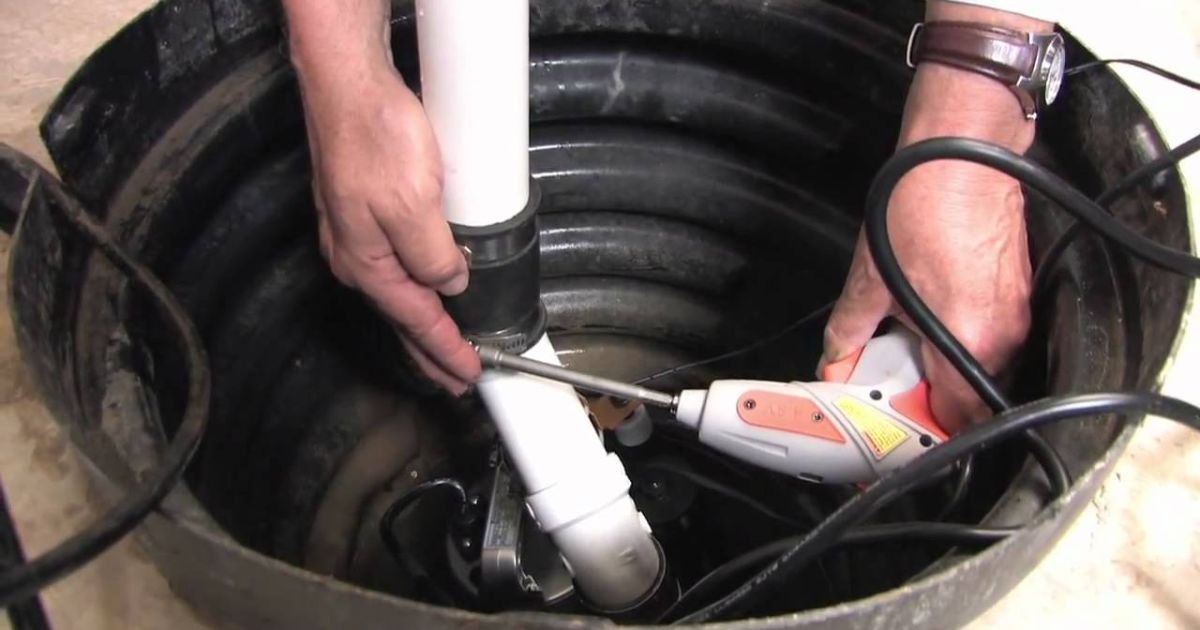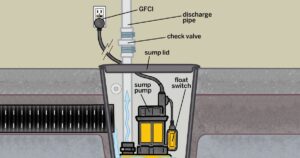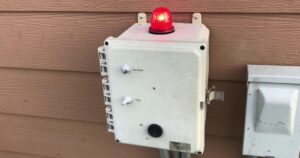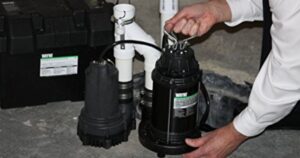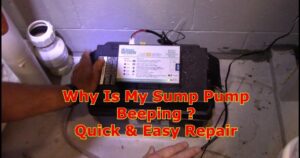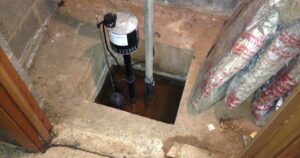In the world of home maintenance, ensuring the functionality of your sump pump is paramount. Like a vigilant sentinel, it guards against the insidious threat of flooding, providing peace of mind and preserving the integrity of your property. This comprehensive guide will equip you with the knowledge and expertise needed to determine if your sump pump is working effectively. From conducting inspections to troubleshooting common issues, this article is a valuable resource for homeowners seeking to protect their investment.
Key Takeaways
- Regular cycling on and off is a sign of a working sump pump.
- Audible sound when the sump pump activates indicates it is functioning properly.
- Visible water being pumped out is another indication of a working sump pump.
- No signs of water leakage or pooling suggest that the sump pump is doing its job effectively.
Signs of a Working Sump Pump

The presence of water being efficiently removed from the sump pit is a clear indication that the sump pump is working properly. When the sump pump is functioning as intended, it effectively collects excess water from the basement or crawl space and pumps it away from the property’s foundation. One of the key signs of a working sump pump is the absence of water pooling or flooding in the basement. Additionally, a properly functioning sump pump should activate automatically when the water level in the sump pit reaches a certain threshold, and it should continue to pump the water out until the pit is emptied. These indicators demonstrate that the sump pump is actively protecting the property from potential water damage. To ensure the continued effectiveness of the sump pump, regular inspections should be performed.
How to Perform a Sump Pump Inspection
To properly assess the functionality of your sump pump, it is essential to conduct a thorough inspection using the following steps:
- Start by visually inspecting the sump pump’s exterior. Look for any signs of physical damage, such as cracks or leaks in the casing. Ensure that the power cord is in good condition and properly connected.
- Next, check the sump pump’s float switch. Gently lift it to see if the pump activates. If it does not, the float switch may need to be adjusted or replaced.
- Lastly, test the sump pump’s operation by pouring water into the sump pit until the float switch is triggered. Observe if the pump turns on and effectively removes the water. If the pump fails to activate or struggles to remove water, it may require maintenance or replacement.
Checking the Electrical Components
Inspect the electrical components of the sump pump for any signs of damage or malfunction. Start by checking the power cord for any fraying or exposed wires. Make sure the plug is securely connected to an electrical outlet. Next, examine the control switch to ensure it is in proper working condition. Test the switch by manually lifting the float to activate the pump. Listen for any unusual sounds or vibrations that could indicate motor issues. Additionally, inspect the circuit breaker or fuse box to ensure the sump pump is receiving power. Look for any tripped breakers or blown fuses. If you notice any signs of damage or malfunction, it is important to address the issue promptly to ensure the sump pump is functioning properly and effectively.
Testing the Sump Pump With Water

Once the electrical components have been inspected for damage or malfunction, it is important to proceed with testing the sump pump with water. This step is crucial in determining the functionality of the pump and ensuring that it will effectively remove water from your basement or crawl space. Before testing, it is essential to learn how to clean a sump pump pit to prevent the pump from clogging with debris and sediment, which can hinder its performance. Here are three key aspects to consider when testing your sump pump with water:
- Fill the sump pit: Start by pouring enough water into the sump pit to activate the pump. This will simulate the conditions during heavy rainfall or flooding.
- Observe the pump in action: As the water level rises, the sump pump should automatically turn on and start pumping the water out of the pit. Pay attention to any unusual noises or vibrations during operation.
- Check the water discharge: Verify that the water is being properly discharged away from your home’s foundation. Ensure that the discharge pipe is clear and that water is flowing freely without any blockages.
Cleaning and Maintaining Your Sump Pump
After testing the sump pump with water, it is essential to regularly clean and maintain the pump to ensure its optimal performance. Cleaning the sump pump involves removing any debris or sediment that may have accumulated in the pump and its components. This can be done by disconnecting the power supply and carefully removing the pump from the sump pit. Inspect the pump for any signs of damage or wear, such as cracks or worn-out parts. Clean the pump using a soft brush or cloth, making sure to remove any dirt or grime from the impeller and other critical parts. Additionally, check the discharge pipe for any clogs or obstructions, and clear them if necessary. Regular maintenance also includes testing the pump’s float switch and backup battery, if applicable, to ensure they are functioning correctly. By properly cleaning and maintaining your sump pump, you can prolong its lifespan and avoid potential failures during times of heavy rainfall or flooding.
Troubleshooting Common Sump Pump Issues
Regularly monitoring the functionality of your sump pump is crucial in ensuring its proper operation during heavy rainfall or flooding. To troubleshoot common sump pump issues, follow these steps:
- Check the power source: Ensure that the pump is properly plugged in and that the circuit breaker hasn’t tripped. Consider having a backup power source, such as a battery or generator, to prevent pump failure during power outages.
- Inspect the discharge pipe: Verify that the discharge pipe is not clogged or frozen, as this can impede the flow of water. Clear any debris or ice buildup to allow proper drainage.
- Test the float switch: The float switch is responsible for activating the pump. Make sure it moves freely and is not obstructed by debris. If the switch is faulty, consider replacing it to ensure the pump operates efficiently.
Different Types of Sump Pumps
To further explore sump pumps, it is essential to understand the different types available and their respective functionalities. There are primarily two types of sump pumps: pedestal pumps and submersible pumps.
Pedestal pumps are installed above the sump pit and have a motor mounted on a pedestal, keeping it out of the water. They are known for their durability and ease of maintenance. However, they can be noisier and less powerful than submersible pumps.
Submersible pumps, on the other hand, are installed directly in the sump pit. These pumps are fully submerged in water and can handle higher volumes of water. They are typically more efficient and quieter than pedestal pumps.
Both types of sump pumps come in various sizes and horsepower options to suit different needs. It is important to choose the right type and size of sump pump based on the specific requirements of your basement or crawl space.
Importance of Regular Sump Pump Maintenance
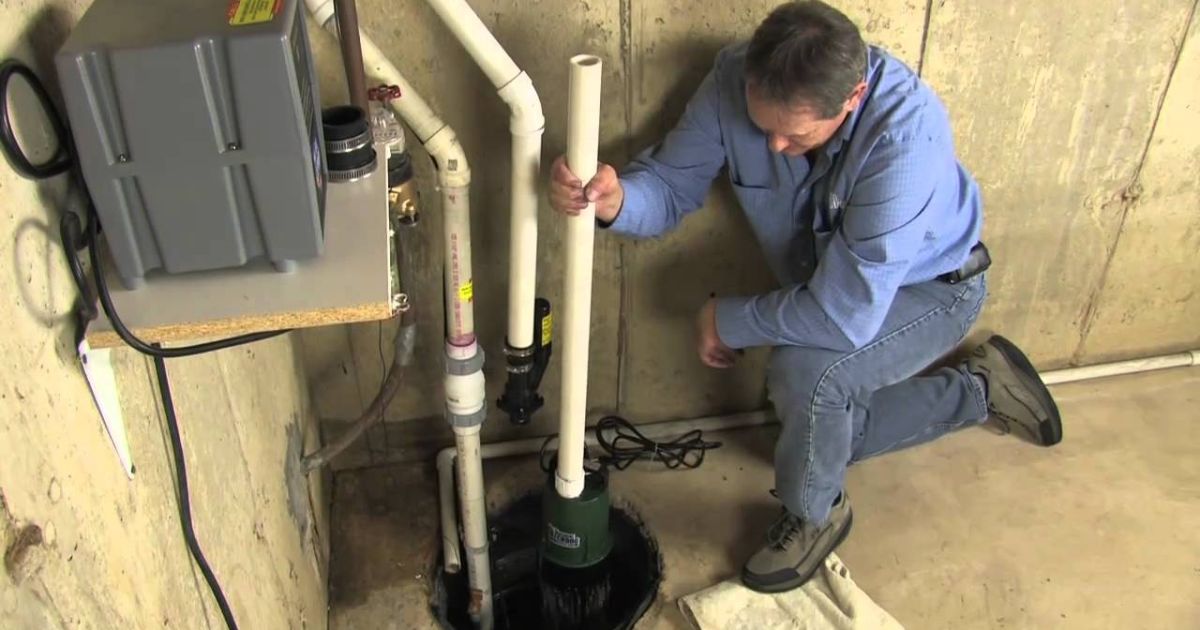
Maintaining sump pumps regularly is crucial to ensure their optimal functioning and prevent potential water damage. By conducting regular maintenance, homeowners can keep their sump pumps in top condition and extend their lifespan. Here are three reasons why regular sump pump maintenance is important:
- Prevent basement flooding: Regular maintenance helps identify any issues with the sump pump, such as clogs or mechanical failures, that could lead to basement flooding. By addressing these problems early on, homeowners can avoid costly water damage and protect their belongings.
- Ensure efficient operation: Over time, sump pumps can become less efficient due to debris buildup or worn-out parts. Regular maintenance, including cleaning and inspection, ensures that the pump operates at its full capacity, efficiently removing water from the basement.
- Peace of mind: By regularly maintaining their sump pumps, homeowners can have peace of mind knowing that their basements are protected from potential water damage. This sense of security and belonging provides homeowners with the confidence that their investment in a sump pump is worthwhile.
Frequently Asked Questions
What Are the Common Causes of Sump Pump Failure?
Common causes of sump pump failure may include power outages, improper installation, mechanical issues, switch problems, and clogged discharge pipes. Regular maintenance and monitoring can help identify and address these issues before they result in pump failure.
How Often Should a Sump Pump Be Inspected and Maintained?
Regular inspection and maintenance of a sump pump is crucial for its optimal performance. By adhering to recommended intervals, homeowners can ensure the pump’s functionality and prevent potential water damage.
Can a Sump Pump Be Repaired or Does It Need to Be Replaced if It Stops Working?
If a sump pump stops working, it is necessary to assess whether it can be repaired or if a replacement is required. Professional assistance should be sought to determine the cause and options for resolving the issue.
Are There Any Warning Signs or Indicators That a Sump Pump Is About to Fail?
There are several warning signs that indicate a sump pump is about to fail, such as unusual noises, frequent cycling, and visible signs of damage. These signs should prompt immediate inspection and potential replacement to prevent basement flooding.
Are There Any Additional Steps or Precautions to Take During Heavy Rain or Flooding to Ensure the Sump Pump Continues to Work Effectively?
During heavy rain or flooding, it is crucial to ensure the sump pump continues to work effectively. Additional steps and precautions can be taken, such as regularly checking and maintaining the pump, installing a backup system, and keeping the discharge pipe clear of obstructions.
Conclusion
In conclusion, regularly inspecting and maintaining your sump pump is crucial to ensure it is working effectively. By checking the electrical components, testing it with water, and addressing common issues, you can avoid potential flooding and water damage in your basement. Remember to clean the pump regularly and consider the different types of sump pumps available to find the best fit for your needs. Don’t neglect the importance of regular sump pump maintenance to protect your home.
